Streams - Objectives
Areas
Stream gauging and hydraulic gradient
Upon completion, students will be able to:
- Measure the volumetric flow rate in a stream
- Characterize the change in flow with distance
- Use Manning's Law with stream gauging to characterize channel roughness
-
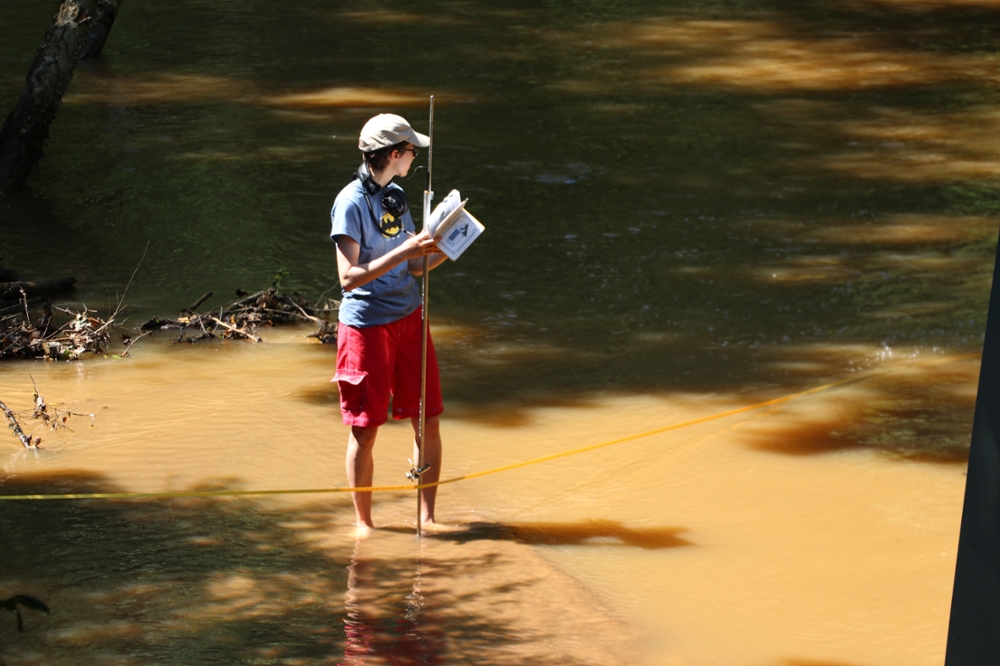
Using a pygmy meter to measure stream velocity
-
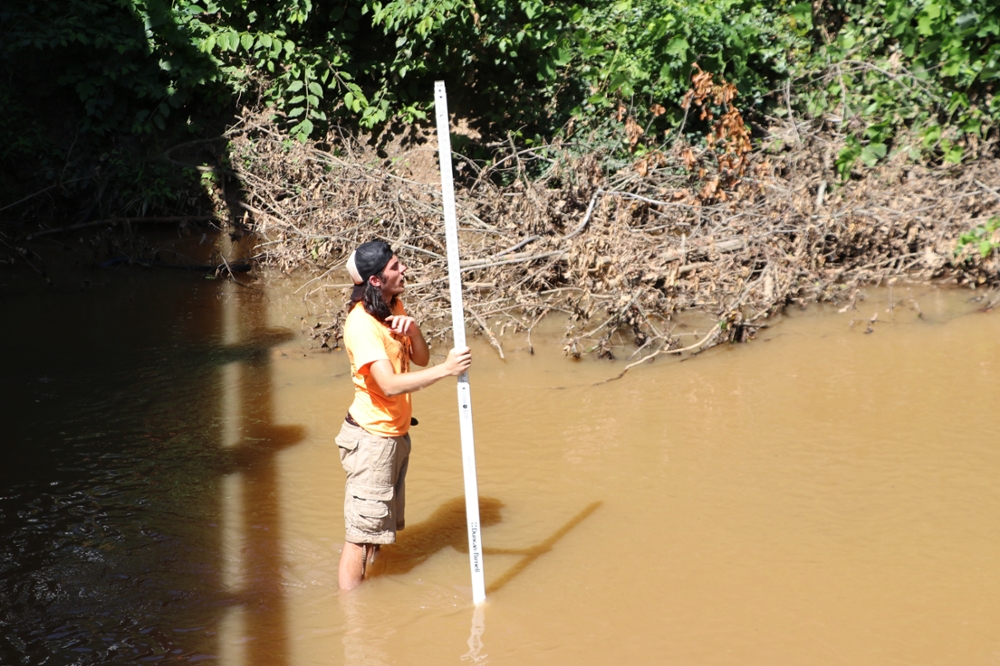
Measuring stream gradient
-
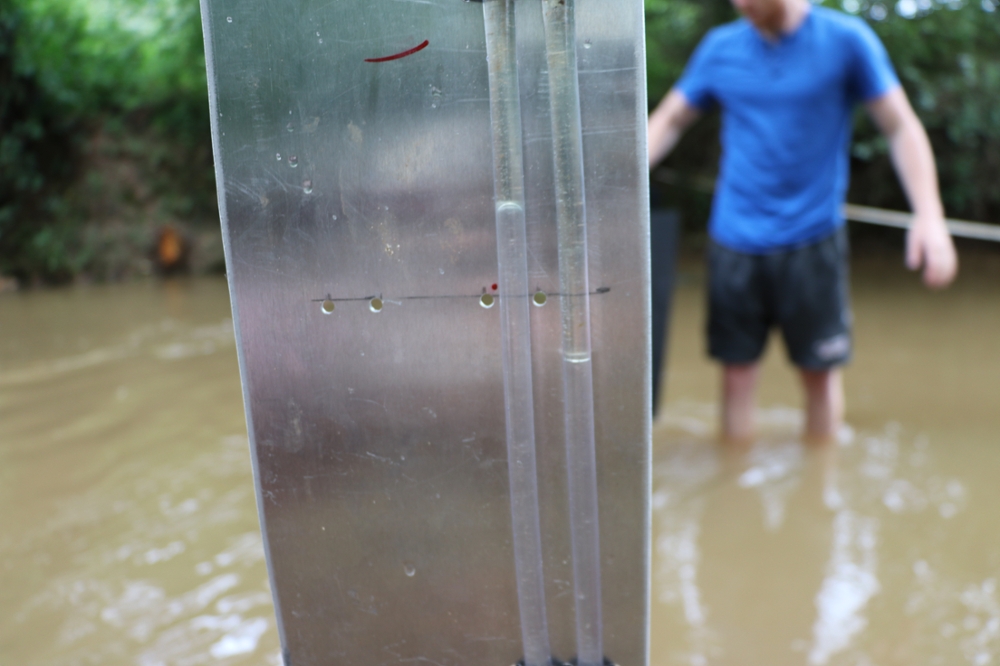
Using a manometer to determine stream velocity
Interaction between groundwater and surface water
Upon completion, students will be able to:
- Characterize the interaction between groundwater and surface water
- Measure the groundwater discharge to a stream
- Measure the vertical hydraulic head gradient in a stream bed
- Estimate the hydraulic conductivity of a stream bed
-
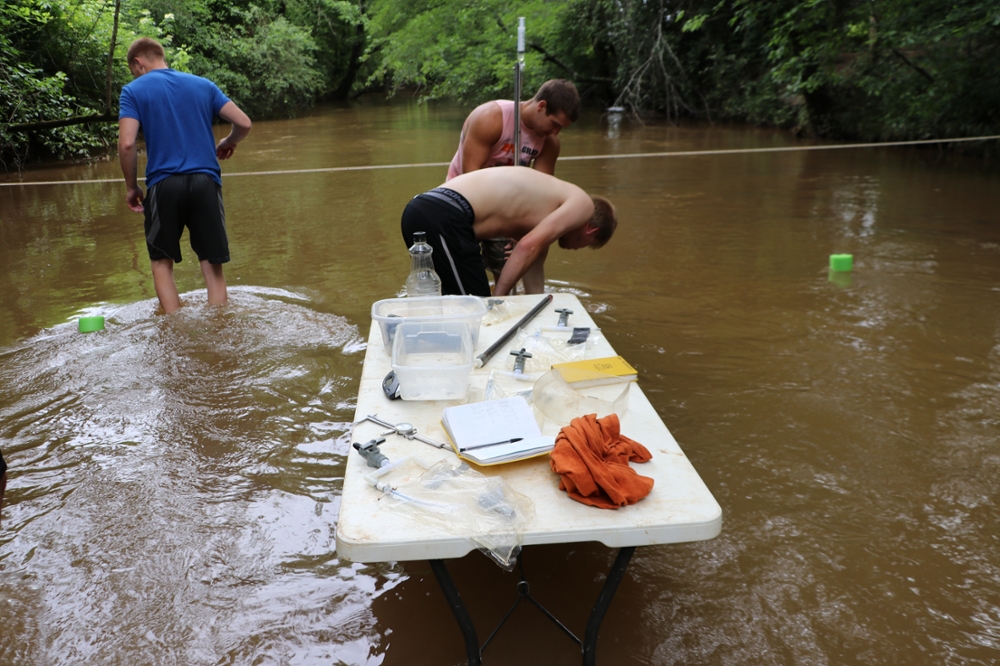
Students installing seepage meters
-
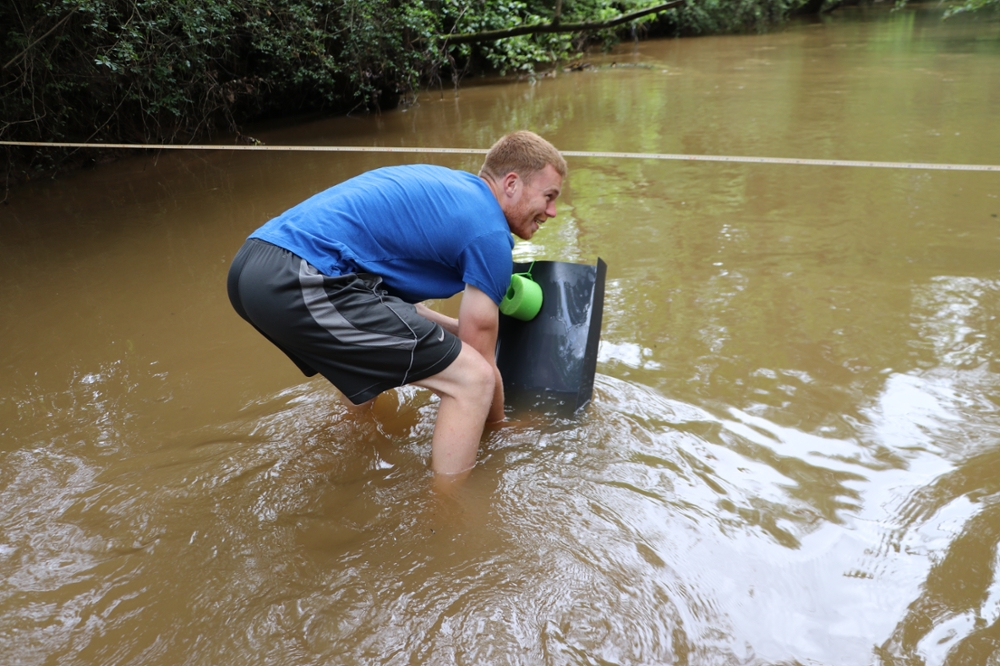
Student installing seepage meter
-
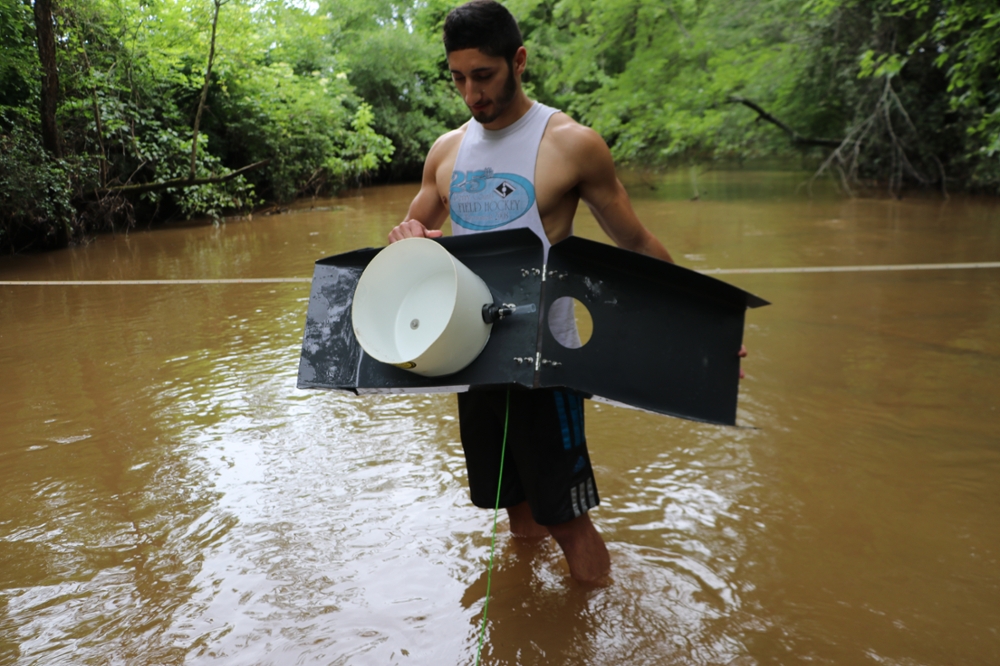
Student inspecting seepage meter
-

Student setting up seepage meter
Water balance and water quality
Upon completion, students will be able to:
- Recognize a stream hydrograph
- Be aware of methods for analyzing hydrographs and recognizing some of the insights that can be gained from them
- Be aware of factors affecting water quality and basic measurements of water quality
- Make water quality measurements and use them to make hydrogeologic inferences
Water and sediment sampling
Upon completion, students will be able to:
- Use methods for sampling surface water and groundwater
- Use selected methods for sampling and characterizing water
- Take sediment cores and analyze the rain-size distribution
- Measure the bed-load transport rate across the width of the channel
-
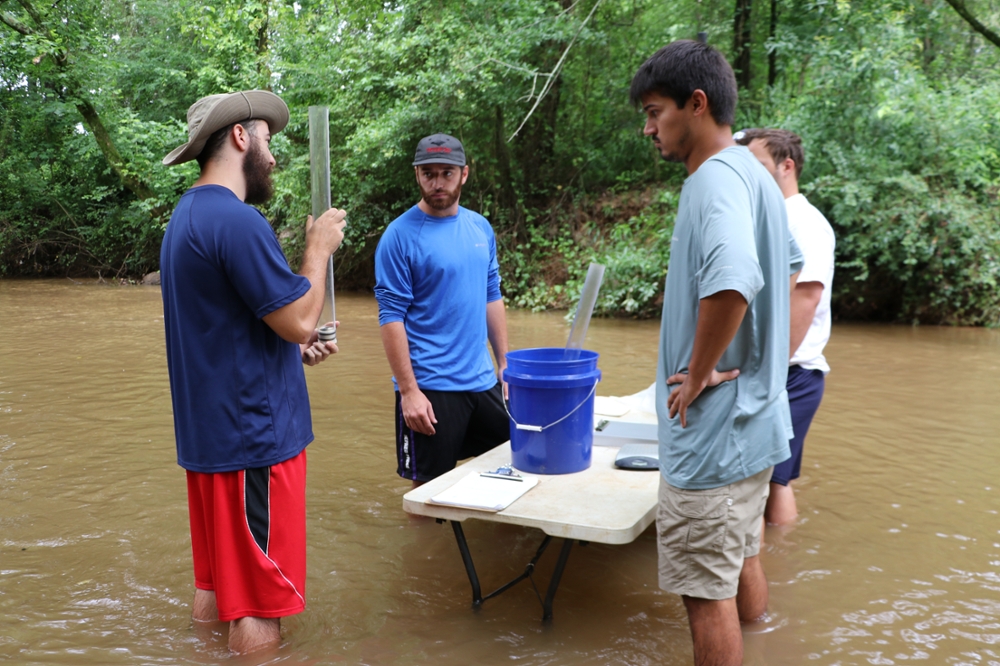
TA explaining the use of stream sediment coring tool
-
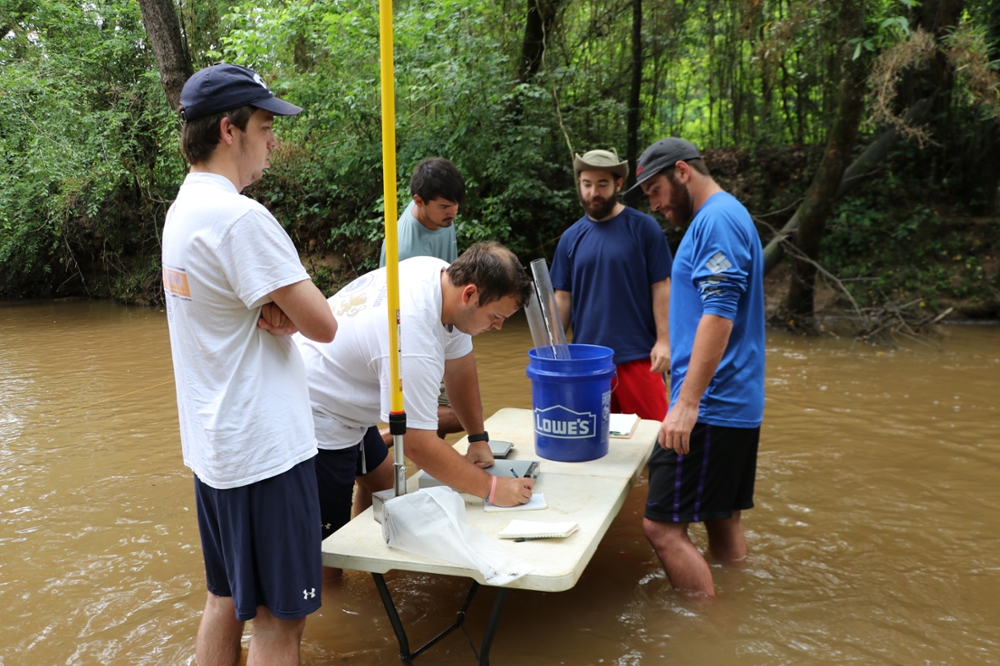
Students preparing to use bedload sampler
-
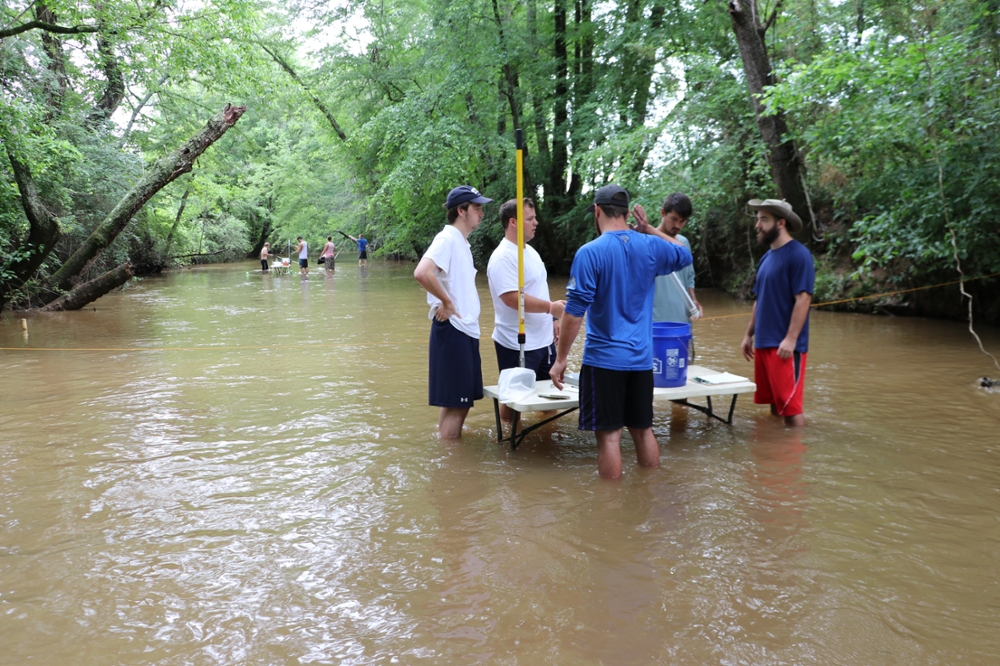
Nice place to be on a hot summer day


